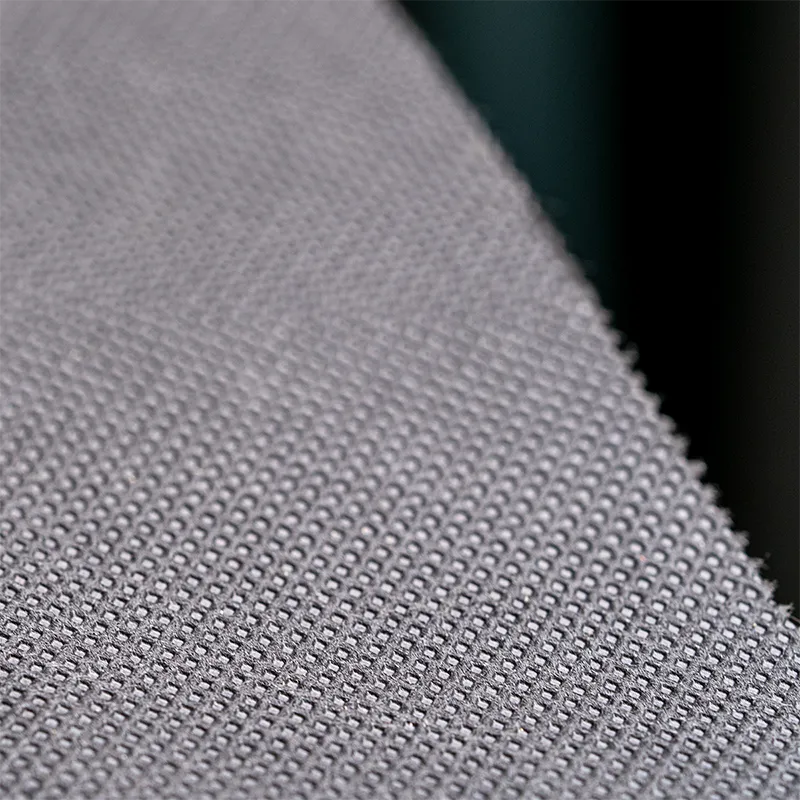+86-159 9860 6917
info@geofantex.com
geofantex@gmail.com
+86-400-8266163-44899
Geotextile landscape fabric is a popular choice for weed control, but many gardeners wonder if grass can penetrate it. In this article, we’ll explore this common question and provide insights into the use of geotextile landscape fabric in lawn care.
What Is Geotextile Landscape Fabric?
Geotextile landscape fabric is a permeable synthetic textile specifically designed for landscaping and lawn care applications. It is commonly manufactured from polypropylene or polyester fibers and produced in woven or non-woven forms to balance strength, durability, and water permeability. Its primary functions include:
- Weed Control: The fabric blocks sunlight from reaching the soil surface, preventing weed and grass germination while allowing desirable plants to grow through designated openings.
- Soil Erosion Prevention: It stabilizes soil by reducing erosion caused by rainwater runoff, wind, or foot traffic, making it ideal for slopes, pathways, and garden beds.
- Water and Air Permeability: Unlike plastic sheets, geotextile landscape fabric allows water, air, and nutrients to pass through, supporting healthy root development and soil conditions.
- Durability and Longevity: Designed to withstand outdoor exposure, UV radiation, and moisture, the fabric provides long-term performance when properly installed.
- Versatile Landscaping Use: It is widely used beneath mulch, gravel, decorative stone, or pavers to improve landscape appearance, reduce maintenance, and enhance structural stability.
Overall, geotextile landscape fabric acts as a functional barrier that controls weeds and erosion while maintaining soil health, making it a reliable solution for both residential and commercial landscaping projects.

Will Grass Grow Through Geotextile Landscape Fabric?
Grass generally will not grow through geotextile landscape fabric when the material is correctly selected, properly installed, and well maintained. The fabric functions as a physical and light-blocking barrier that disrupts grass germination and root penetration while still allowing water and air to pass through.
- Barrier to light and growth: By blocking sunlight from reaching the soil surface, geotextile landscape fabric prevents grass seeds beneath the fabric from germinating and stops established grass from continuing upward growth.
- Importance of proper installation: Effective performance depends on laying the fabric flat, securing it with landscape pins, and overlapping seams adequately. Gaps, folds, or loose edges create entry points where grass can grow through or around the fabric.
- Influence of fabric type: High-quality woven and non-woven geotextiles offer superior strength and durability, resisting puncture and root penetration better than thin or low-density weed barriers.
- Surface accumulation risk: Grass can appear to grow “through” the fabric when seeds germinate in soil, mulch, or organic debris that accumulates on top of it. In these cases, roots are not penetrating the fabric but growing above it.
- Long-term maintenance considerations: Over time, UV exposure, physical damage, or fabric degradation can create openings that allow grass intrusion. Regular inspection and maintenance help preserve effectiveness.
In summary, geotextile landscape fabric is highly effective at preventing grass growth when installed and maintained correctly. Most cases of grass penetration result from installation errors, surface debris buildup, or fabric damage rather than failure of the geotextile itself.

How can grass penetrate geotextile landscape fabric?
- Effectiveness Against Grass Growth: Geotextile landscape fabric generally prevents grass from growing through when properly selected, installed, and maintained. It acts as a physical barrier and blocks sunlight, disrupting germination and root penetration while still allowing water and air to pass through.
- Proper Installation: The fabric should be laid flat, secured with landscape pins, and edges overlapped sufficiently to prevent gaps. Loose edges, folds, or insufficient overlaps create entry points for grass growth.
- Fabric Type: High-quality woven and non-woven geotextiles offer superior strength, durability, and resistance to puncture, making them more effective than thin or low-density weed barriers.
- Surface Accumulation Risk: Grass may appear to grow “through” the fabric if seeds germinate in soil, mulch, or organic debris that accumulates on top. Roots are growing above the fabric, not through it.
- Long-Term Maintenance: Over time, UV exposure, physical damage, or wear can create openings, allowing grass to penetrate. Regular inspection and debris removal help maintain the barrier’s effectiveness.
- Edge and Seam Considerations: Grass often invades through unsecured edges or seams. Ensuring proper overlaps and secure pinning minimizes this risk.
With correct fabric selection, installation, edge securing, and maintenance, geotextile landscape fabric effectively prevents grass and weeds from growing through while allowing water and nutrients to reach the soil.
Will Grass Grow Through Geotextile Landscape Fabric?
Grass generally will not grow through geotextile landscape fabric if it is properly installed and maintained, but certain conditions can allow penetration. Key points include:
- Proper Installation: Fabric should be laid flat, pinned securely, and edges overlapped to prevent gaps where grass or weeds could grow.
- Fabric Type: Woven and non-woven geotextiles are strong and durable for effective weed control; cheaper or less dense fabrics may be less effective.
- Seed Germination on Surface: Grass seeds can sprout on accumulated debris or soil atop the fabric if left unmanaged.
- Growth Through Pores: Permeable fabrics have small pores to allow water and air; roots or shoots may grow through if pores are large or the fabric degrades.
- Edges and Seams: Weak points at edges or insufficient overlaps can allow roots to penetrate underneath.
- Fabric Damage: Tears, punctures, or UV degradation over time create openings for grass invasion.
With proper installation, edge securing, and routine maintenance, geotextile landscape fabric effectively prevents grass and weeds from growing through while still allowing water and nutrients to reach the soil, supporting healthy plant growth.
While grass can potentially grow through geotextile landscape fabric under certain conditions, proper installation and maintenance can help minimize this risk. By understanding how grass penetrates the fabric and taking preventative measures, gardeners can harness the benefits of geotextile landscape fabric to create healthy, weed-free lawns.



Get Free Sample
We’ll respond as soon as possible(within 12 hours)






















